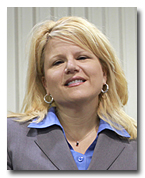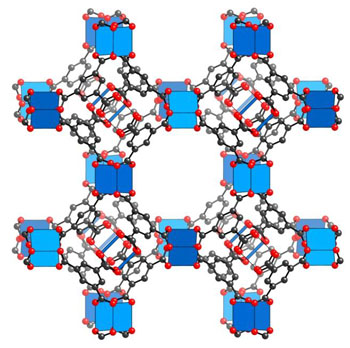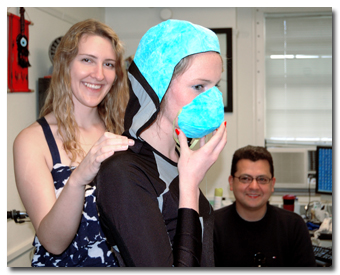ATLANTA — July 13, 2011 — Home Textiles Sourcing Expo welcomes eleven Egyptian companies exhibiting
in conjunction with the Egyptian Home Textile Council. The second edition of Home Textiles Sourcing
Expo takes place July 19 – 21 at the Javits Convention Center in New York City and is co-located
with Texworld USA, the largest apparel fabrics show in North America.
In addition to the Egyptian pavilion on the show floor, sourcing from Egypt is also
incorporated into the show seminar program. On Tuesday, July 20, Dr. Ashraf El Rabiey – Consul,
Head of the Trade Office of Egypt in New York is giving a presentation on
How to Source Duty-Free Textiles from Egypt.
The seminar is organized by Home Textiles Sourcing Expo supporting partner Lenzing Fibers and
provides attendees with the opportunity to learn about the Egyptian economy and the current
political situation. Insights are offered regarding how to promote business among US and Egyptian
partners as well as an update on the home textile and garment industry in the country. Information
will be provided regarding how U.S. companies can source duty free textiles from Egypt. The
qualified industrial zones protocol among the U.S., Egypt and Israel as well as the agreements
linking Egypt with other trade partners is also on the agenda to be discussed.
By participating in Home Textiles Sourcing Expo, Dr. El Rabiey seeks to assure sourcing
professionals that “Egypt is definitely open for business. In fact, we are all very happy with the
continuous increase in U.S. imports of home textiles and clothing since the revolution as well as
the execution of all shipments on time. This is the first trade show in New York that Egypt is
participating in since the revolution and we are all very excited and keen on making it a success.”
Egyptian cotton and home textiles including bed linens and towels are already well-perceived
in terms of quality and style by American consumers. Egyptian companies participating in the July
2011 edition of Home Textiles Sourcing Expo include:
Artline, Booth 3306
Artline offers high quality embroidered fabrics for curtains, sofas and wall hangings. Their
products are created using the finest fabrics including velvet, silk and taffeta. Artline’s
commitment to quality starts with the finest yarns which contribute to the inspired product. A team
of skilled designers and illustrators proficient in the latest global creative design programs
ensure creative, varied designs suitable for all tastes. Their investment in the latest types of
embroidery machines results in remarkable quality and special production capabilities including;
embroidery with crystals, embroidery with sequins and embroidered appliqués. Artline also offers
hand embroidery.
Bait Almotrazat, Booth 3308
Bait Almotrazat uses the finest types of Egyptian cotton raw materials, incorporating new
colors and unique designs to be up-to-date. An emphasis on building a relationship with the
customer ensures a high quality final product. They specialize in 100% cotton bed sheets and covers
with custom embroidery.
EL Telawy Group, Booth 3310
The EL Telawy Group has expertise in coverlets. They specialized in producing the best
quality of embroidered and printed coverlets, quilts and bead spreads with fashionable new prints
using high quality cotton materials. They pride themselves on their ISO 9001 certification.
Hesham Tex Co., Booth 3211
Top retailers in Spain, Italy, Romania, France, Germany, Belgium, Russia and the Arabian Gulf
are already familiar with Hesham Tex Co. towels and bathrobes. They make and manufacture all types
of towels including beach towels, kitchen towels, face, hand and bath towels as well as their
sought-after bath robes. All products are 100% Egyptian cotton and Hesham Tex also currently holds
an ISO9001 certificate of quality and the ISO18001 Certificate of Occupational Health and Safety.
Kozman Textile Group, Booth 3201
Kozman Textile Group is one of the leading manufacturers of home textiles in Egypt. Their
impressive collection includes upholstery fabrics in natural silk, velvets, cotton and chenille;
jacquard curtains in organza, voile, cotton and linen; plain fabrics for outdoor applications and
embroidered curtains. Kozman is already well known among high end retailers in Egypt and they are
eager to enter U.S. department stores.
Mahmoud Hamed EL Ghannam Textile Factory, Booth 3326
Established in 1984 and equipped with thirty-six high-tech looms, Mahmoud Hamed EL Ghannam is
an established resource for kitchen and bath towels, offered in flat and terry styles. Their
technicians are experienced in working with jacquard and dobby
looms. Table cloths are also available. All products are made of 100% pure Egyptian cotton.
Nile Textile Industries S.A.E., Booth 3300
Nile Textile Industries S.A.E. is highly qualified in making 100% cotton home textiles
including: bath towels, beach towels in jacquard and velour, hotel towels including vat dyed pool
towels, terry and waffle bath robes. They also offer percale and sateen bed sheets up to 600 thread
count.
Pyramids Free Zone, Booth 3219
Pyramids Free Zone is a manufacturer of terry products, including wash cloths, hand and bath
towels, bath sheets, beach towels, hotel and spa towels (with or without company logos), hospital
towels, dobby or jacquard designed towels, embroidered towels, bath robes, hair towel wraps, baby
terry products and towels with or without borders, in all color palettes and designs. They
specialize in terry products woven on dobby and jacquard looms such as bath towels in all sizes,
bath robes, terry blankets, beach towels, and embroidered terry products.
United Textiles, Booth 3312
Nature’s gift of lustrous cotton to Egypt inspires their collections of cotton, polyester and
blended yarn produced in open end and ring spinning systems. They offer terry towels and bath robes
made of pure Egyptian cotton in solid, dobby and jacquards. Weights vary from 350gm/m2 to
1500gm/m2. The scope of their capabilities is impressive and spans both woven and knit goods. Woven
fabrications available include plain weave, dobby, jacquard, herry, duck, twill, drills, corduroy,
satin, micro stripe, micro check satin band, percale and oxford.
The Egypt Home Textile Export Council and the Egypt Expo & Convention Authority (EECA)
welcome all interested parties to learn more about the quality products and unique production
capabilities of the Egyptian mills by visiting their Booth 3207.
July 2011
Home Textiles Sourcing Expo is the only U.S. event solely focused on fabrics and finished
soft goods for all home applications. The second edition of Home Textiles Sourcing Expo will take
place July 19 – 21, 2011 at the Javits Convention Center in New York City. The event will feature
fabrics and finished soft goods from more than 134 exhibitors.
For further information, please visit
www.HomeTextilesSourcing.com.
Posted on July 19, 2011
Source: Messe Frankfurt









